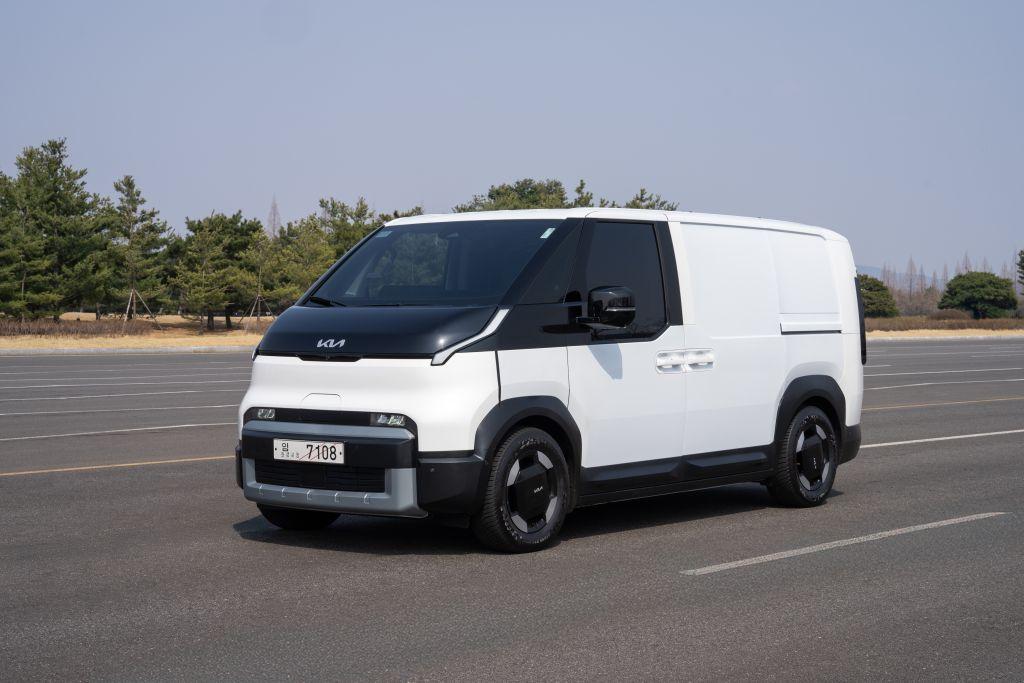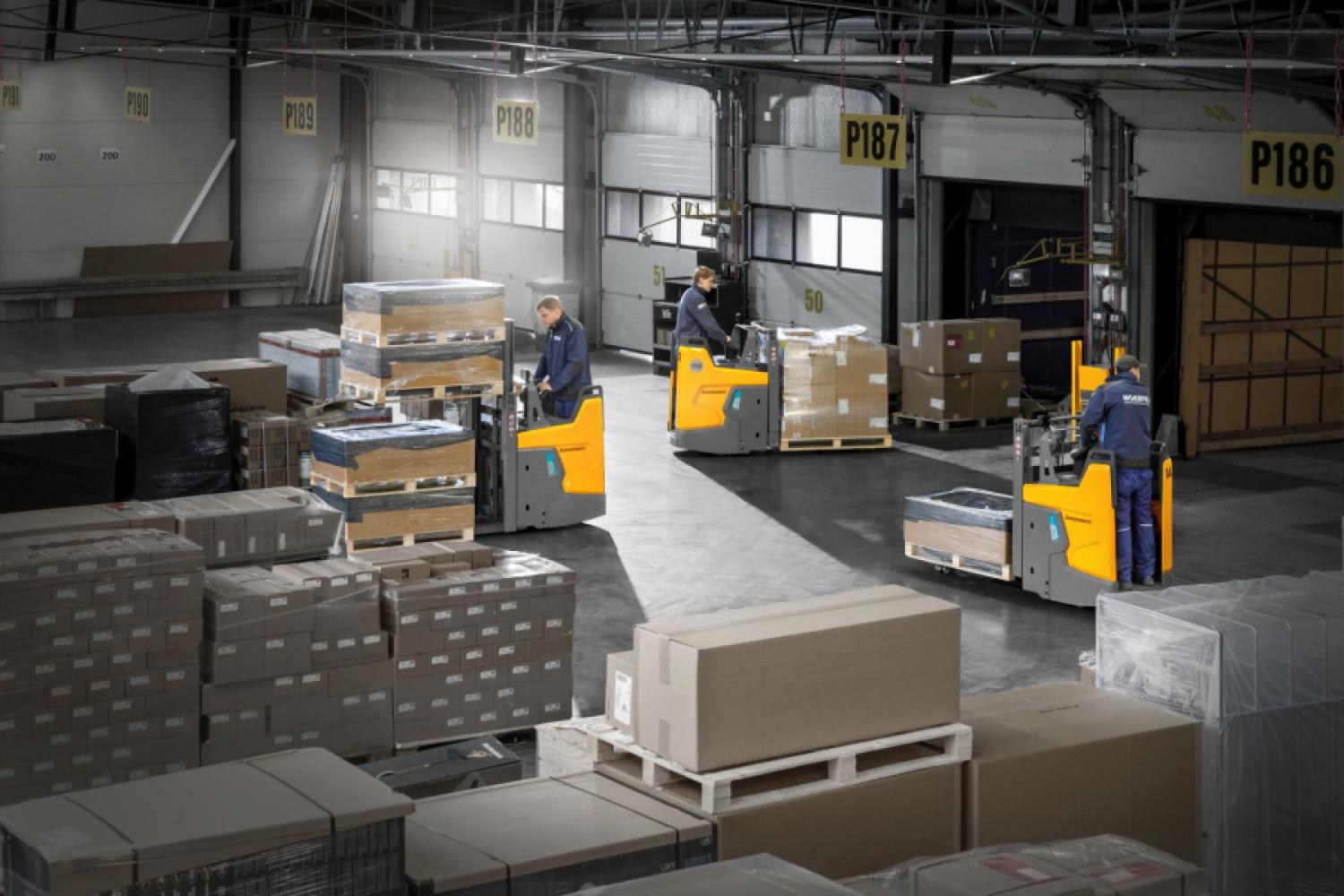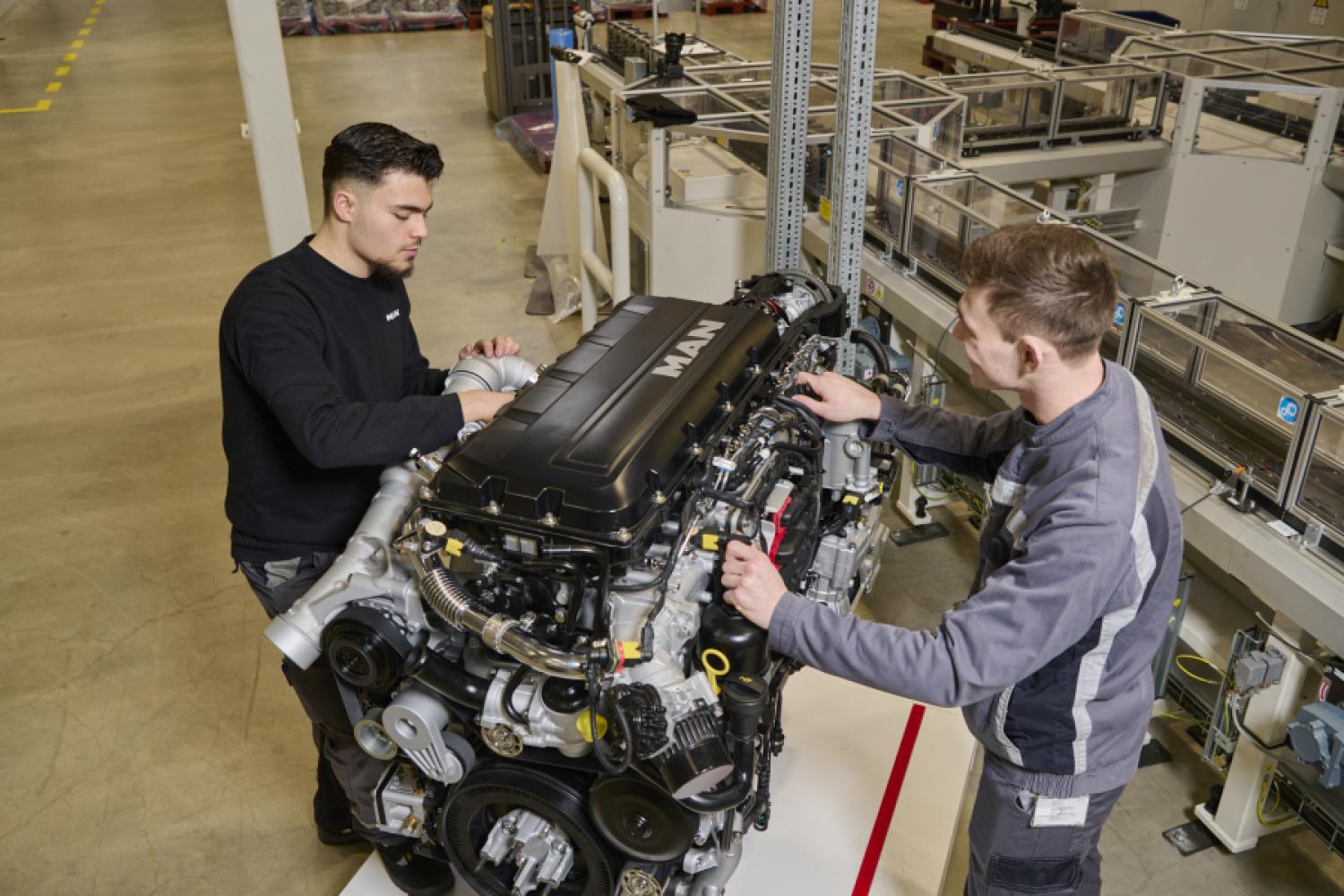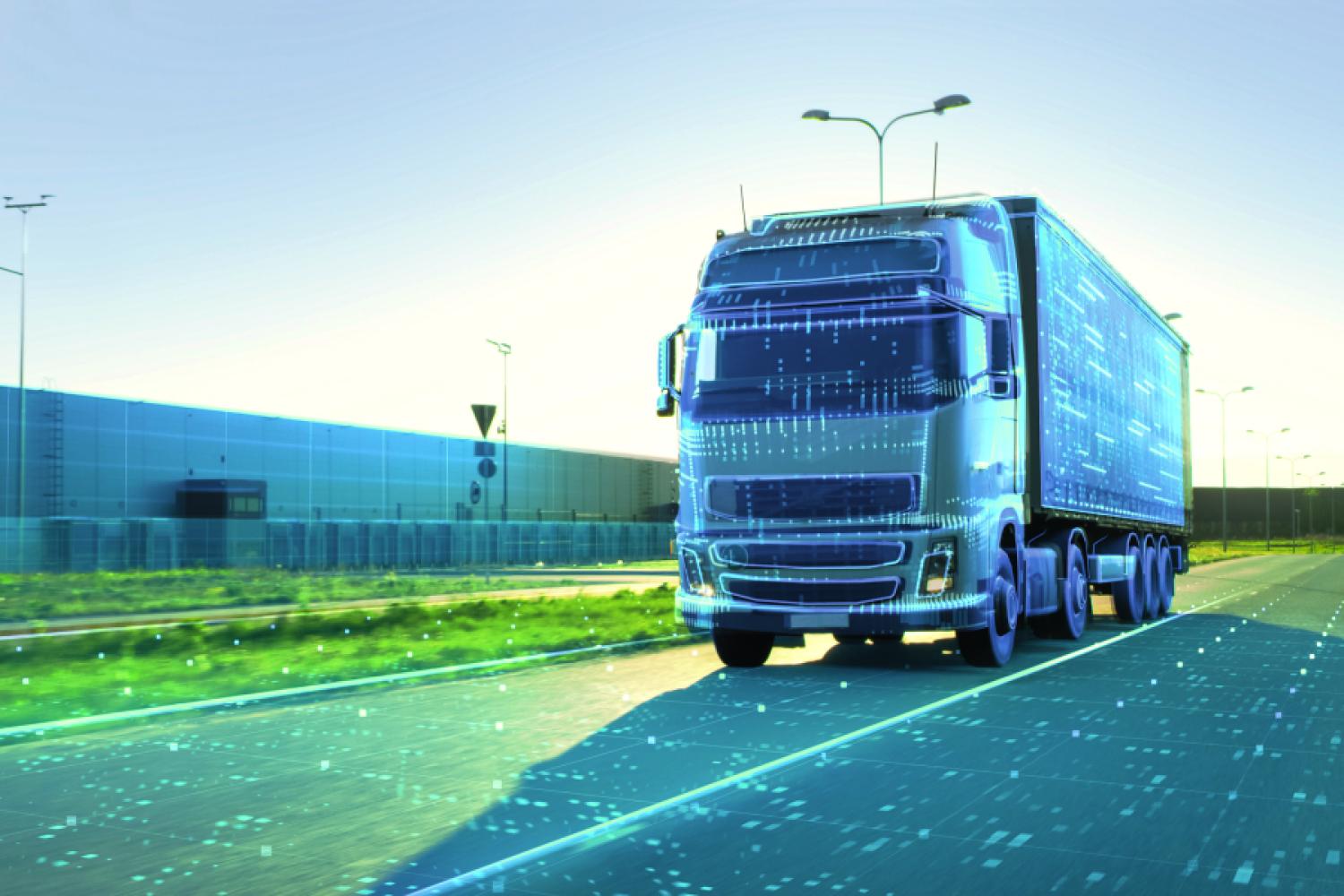They actually did it: Anyone who wondered whether the Koreans would be brave enough to implement this rather unconventional design, especially for a van, now gets the answer in metal form. And the Kia makers are taking a threefold risk: Not only did they stop their streak as a van brand with successful models like Bongo or Besta and basically have to start fresh. They are entirely relying on a dedicated and modular electric platform e-GMPs (Skateboard) – leaving the combustion engine era completely behind. And without the safety net of a multi-drive base that most competitors use, except maybe the Maxus eDeliver5 and the VW ID.Buzz. The latter, however, is considered more of a passenger van than a "true" commercial vehicle due to its high price. Sure, their courage has prompted the competition to take note – Renault in the Flexis-Joint-Venture is now doing the same and Mercedes has been talking about its VAN.EA platform for quite some time, but they've gotten cold feet respectively scared of their own boldness that they've quickly added a VAN.CA counterpart.
Kia is going full risk
Kia is going "all in", as they say and wants to mitigate the risk of the purely electric drive with convincing features and particularly costs. The goal is for customers not to miss the "good old diesel" at all, simply making diesel obsolete. Of course, a competitive price of 33,000 euros net for the urban-oriented base version with a 43-kWh LFP battery (238 km range) is enticing and a statement to the competition. With the 51-kWh battery, then lithium-ion NMC, the PV5 becomes a mid-range vehicle (291 km) or with a 71-kWh battery even a long-distance electric vehicle (397 km), which thanks to a fast charger with 150 kW charges from 10 to 80 percent in under half an hour, or also during a lunch break with an optional 22 kW AC charger. Or it can provide power, i.e., a mobile power bank with V2L or a grid-compatible power storage with V2G capability. A powerful ePTO as an electric secondary drive should also be available.
Delivering not just a vehicle, but a system
By the way, the easily manageable Plug & Charge is also possible with the PV5 if the charging station and provider support it. And they want to deliver the charging infrastructure to customers as well, such as complete depot charging solutions. The E-van should also save significantly in operation, thanks to high efficiency and low operating costs and equally low maintenance and service efforts, including details like a three-part bumper or inexpensive 16-inch wheels. Also, the standard connectivity via modem makes the vehicle a "data
carrier" delivering countless parameters to an app or Geotab telematics, enabling preventive maintenance or connection to superstructures. Trust should also be instilled by the ten-year warranty over 200,000 km on the vehicle and electric drive.
Durability: Twelve-year lifecycle
Additionally, the vehicle is supposed to last twelve years at least – and is designed for a mileage of 600,000 kilometers. Ultimately, the argument should also be convincing that thanks to the purely electric concept, which enables a completely different layout due to the compact drive and battery setup, you get a vehicle with the space of a C-segment with the footprint of a D-segment van. In other words, a Caddy with almost as much space as a Bulli, at least in L2H2 (4.69 m, partition wall with sliding door & folding seat available). The 4.5-meter short base offers with 4.4 cubic meters noticeably more space than a 4.85-meter-long Caddy Maxi, on much less area. The L2 version with an extra 20 centimeters rear overhang then holds 5.1 cubic meters, almost hitting Mercedes Vito or VW T7 figures. So two pallets always fit in the 2.05 to 2.25-meter-long, 1.51 to 1.81-meter-high and with a 42-millimeter low loading edge thanks to the flat construction battery, the 4.5-meter van that rides in compact van format with 1.89 width and 1.90 meters height.
Unique: Super deep cargo space
This produces a kind of curb inside between the slim wheel arches – if you need a flat surface, you can order a Flex-Rack for the ample trunk with the wagon, or a raised loading floor on wheel arch level with the box version, then with underfloor storage options. This results in 1.33 meters of width between the wheel arches (at 1.56 general loading width), also a top value – and the option to transport two pallets, since side loading with the rather wide, but not wide enough 77-centimeter sliding door otherwise doesn't work. The base offers 735 kilograms of cargo, 790 kilograms are possible with the middle battery with higher total weight, but the 71-kWh transporter thanks to the slim battery pack maintains measure and is supposed to hold 690 kilos. According to Kia engineers, an increase of 100 kilos in payload would only raise consumption by 1.5 percent, claiming another best value in the segment. Calculating preliminary ranges and battery sizes by consumption, the PV5 with around 18 kWh/100 km would really be a very economical E-van, following in the footsteps of its EV car siblings, benefiting strongly from their recognized advanced technology in Hyundai's corporate toolkit.
Flexible production with individual potential
With a flexible production in a brand-new, highly automated and digitized factory in Hwaseong,
Korea, they aim to realize a kind of "customized mass production," offering not just the major derivatives like chassis, box (5.5/6.9/7.9 m³ at 4.99 m length & 2.1/2.45/2.65 m length), frigo, flatbed, wagon (5/6/7 seats), wheelchair, light camper or other industry models and equipment features in cooperation with renowned body and outfit manufacturers, but also factory-made brand wrap coatings.
Incidentally, if service is required, the established dealer network rather than new Chinese brands shall handle this. Reportedly, there has been significant interest from the dealership in the PBV project, thus the network should be dense from the start if many of the 2,660 dealers in Europe participate. As the "big sister" Hyundai had to learn from its failed attempt with the H350, in the commercial business nothing works without it, as compelling as the product, which the H350 was, may have been. However, this also works the other way around: No chance without a good product.
Drives like a big EV3
This is undoubtedly true for the PV5 after the very first driving impression with pre-series models. By utilizing as many synergies as possible with the passenger car division, basically a bus version of the finely driving EV3 was created. Seamlessly, but without panic and traction issues, the synchronous front motor sets off, pulling the van swiftly to cruising speed with a quiet whir. The road holding is solid and safe, handling is easy and light, and the body already seems rigid and creak-free. However, the steering could use more precision for European tastes and the chassis could be a bit firmer. Though ride comfort appears to be pretty good, as does the rolling and noise comfort up to 100 km/h. At 120 km/h, the wind audibly pulls at the angular body. But there will likely be further adjustments, as the E-van is equipped with elaborate floor insulation.
Big class, small turning circle
The super small turning circle around ten meters is impressive, and the easily adjustable recuperation via steering wheel paddles up to the "i-Pedal" with real one-pedal drive that makes the service brakes almost redundant. Kia spares no effort in terms of safety and transfers the driver assistance features from the passenger cars to the vans: Automated driving at level 2 is therefore standard and one can expect a high level of control accuracy regarding distance and lane assistance or features practical in delivery everyday life like a stop-and-go assistant for the PV5. Also, depending on ADAS equipment, a EuroNCAP rating of four or five stars can be expected, thanks to a "multi-skeleton, energy-absorbing structure," as the engineers enthuse. The battery won't be compromised even in a pole crash,
by the way.
Familiar good operation
This is complemented by the familiar good operation from Kia with all the elements known from the passenger cars like the infotainment (Android Auto-based, Updates over the Air/OTA) with voice assistance, the multifunction steering wheel or the central cluster with the main information. The low entry into the vehicle is also pleasant, made even easier by somewhat clunky looking handrails on the A-pillar. Additionally, thanks to the flat floor, one can easily move through the vehicle to the side, facilitated by the ample space, making handling within the vehicle as easy as in the 3.0-tonne Bulli class. And thanks to the low skirting window line, the view over the already very short front from a comfortable and well-formed seat is excellent.
Pragmatic, practically good: Angular design in the cabin
There's no lack of storage in the homely equipped and presumably flawlessly processed interior even in series trim, with a center drawer in the wagon and an open compartment in the box version, supposedly DIN A4 compatible, plus huge, multi-tiered door pockets and as a highlight two underfloor compartments. The mirrors resemble passenger car types more and could offer a better view of the ground, coat hooks would also be nice. In the wagon, you sit a bit low in the back, but also comfortably. The highlight here is deep and spacious underfloor compartments, above which a pallet is likely to fit across in the five-seater. The mixed-user is addressed with a flexi partition wall, quickly transforming the van into a wagon, similar to how Ford recently showed with the Transit Connect or VW in the T7.
The competition has some catching up to do
Which brings us back to the topic: This PBV package certainly doesn't have to hide from the competition. Rather, the bold advance from Korea may cause the competition to fear whether they themselves did everything right or should have risked more. After all, Kia predicts a rapid increase in the EV share in the C-van segment from 24 to 39 percent by 2030 - a slice of the pie they want a big cut of. We shall see. In any event, the official starting signal for the "PBV Project" was given on May 2, production begins in August, and the first models are to roll out to dealers by November. The chassis will be available soon, with the wagon following in 2026. And in 2027, the larger PV7 will also be showcased for the first time in the context of the Van of the Year Jury. Our wager: It offers as much space on a compact footprint as a 3.5-tonner. Consistently






